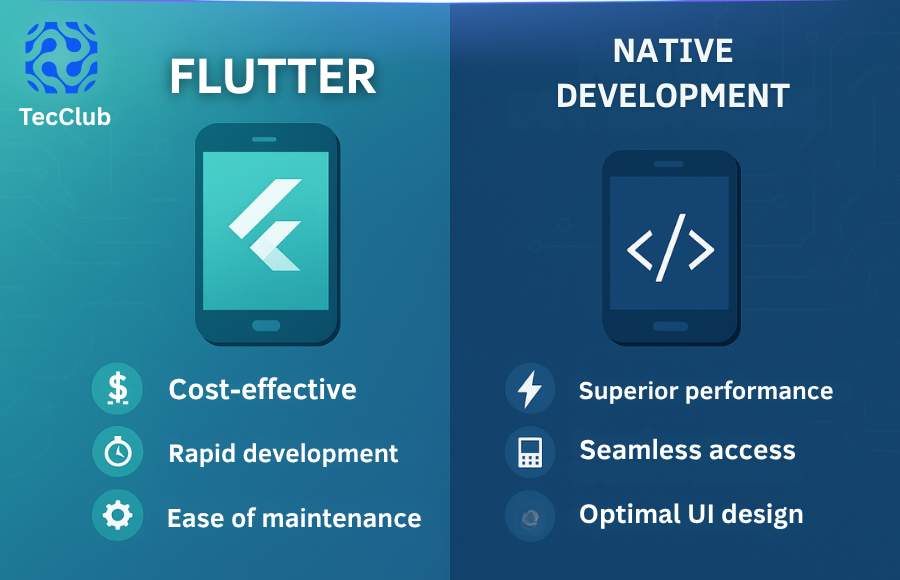
If you’re planning to build a mobile app, there’s one question you’ll almost always run into:
👉 Should you build it natively for iOS and Android, or just go with Flutter and hit both at once?
It’s one of those debates that keeps popping up in tech circles. And the truth is, there’s no single “best” option—it really depends on what you’re building, how much budget you’ve got, and how quickly you need to launch.
Let’s break it down in plain, no-fluff terms.
When you build an app natively, you’re writing code specifically for one platform. iOS apps are usually made with Swift (or sometimes Objective-C), while Android apps are built with Kotlin or Java.
✅ Why teams still love it:
You get top-notch performance because the app’s built directly for that system.
Seamless access to device features (camera, GPS, sensors—no workarounds).
Super smooth animations and UI that look exactly like what Apple or Google intended.
❌ But here’s the trade-off:
You’ll need two codebases (iOS + Android), which means more time, more money, and more people to maintain it.
Every update has to be done twice.
That’s why native is usually chosen for apps where performance is mission-critical—like high-end games, AR/VR, or finance apps where a small lag can cost big.
Flutter is Google’s cross-platform framework. Instead of building two apps, you write one codebase in Dart, and it works on both iOS and Android.
✅ Why it’s a favorite for startups:
Faster and cheaper development since you’re building once.
The awesome “hot reload” feature makes testing changes almost instant.
Strong community, lots of packages, and Google keeps investing in it.
❌ Where it can fall short:
App sizes are a bit bigger than native apps.
Some advanced hardware features might still need native tweaks.
For very complex or resource-heavy apps, it’s not always as optimized as native.
That said, for most business apps, Flutter is more than enough. It’s especially great if you’re launching an MVP or need to get to market fast.
Let’s be real—native apps will almost always win the pure performance battle. They’re built to run directly on the system with no extra layers.
But here’s the thing: unless you’re building a 3D game, VR app, or something ultra-heavy, most users won’t notice the difference. For e-commerce apps, social platforms, or productivity tools, Flutter feels just as smooth as native.
This is the part founders and businesses care about most.
Native = 2 apps → 2 teams → higher cost + longer timelines.
Flutter = 1 app → 1 team → faster launch + lower cost.
If you’re testing a new idea or building an MVP, Flutter almost always makes more sense. You’ll save money, launch quicker, and get user feedback earlier.
Big enterprises with larger budgets sometimes go native because they want every ounce of performance—but for most businesses, Flutter gives you way more bang for your buck.
Here’s a simple way to look at it:
👉 Pick Flutter if…
You’re on a budget and want to launch on iOS + Android fast.
You’re building an MVP or business app that doesn’t need hardcore hardware features.
You want easier updates and less overhead in the long run.
👉 Pick Native if…
Your app is performance-critical (gaming, AR/VR, fintech).
You need the deepest integration with device features.
You’ve got the time and budget to support two separate apps.
At the end of the day, both Flutter and native have their place. Flutter gives you speed, affordability, and flexibility, which makes it the go-to choice for most modern apps. Native gives you maximum performance and polish, which is perfect when you’re building something that really pushes hardware to its limits.
If you’re unsure? Honestly, start with Flutter. It gets you into the market quickly, and you can always switch to native later if your app grows into something that demands it.
✅ Quick Takeaway:
Flutter = Build faster, launch cheaper